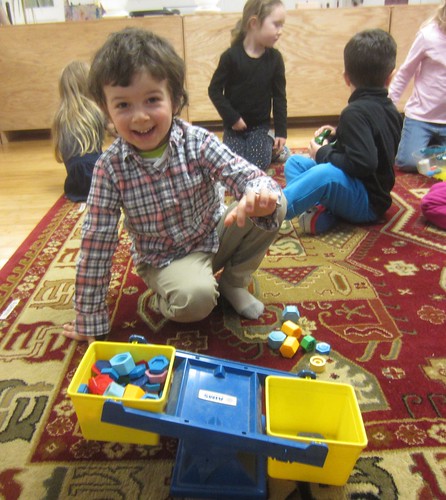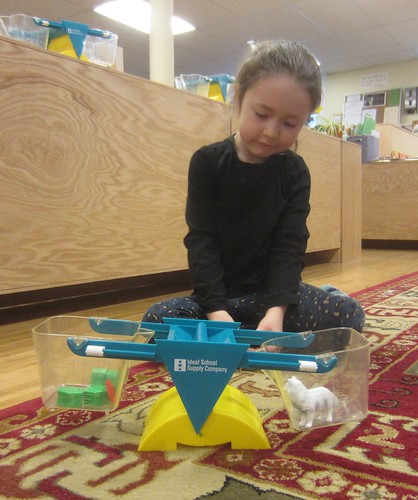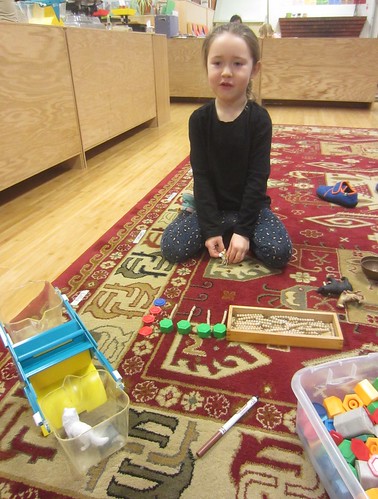
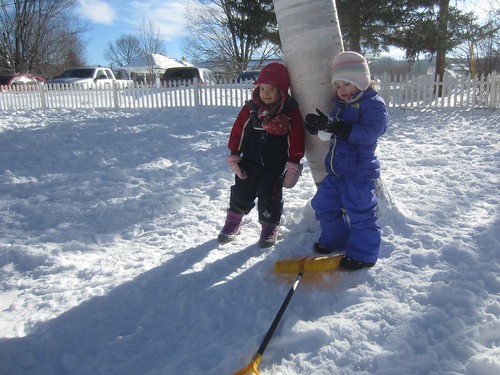 Sledding, snowman building, and shoveling kept us busy in the snow. The children built up a little snow hill to sled down, then took turns holding the sleds for each other. They fanned out to make snow angels and rolled snow balls for snowmen. They pulled each other in sleds around the paths they shoveled out, and followed the leader through the yard.
Sledding, snowman building, and shoveling kept us busy in the snow. The children built up a little snow hill to sled down, then took turns holding the sleds for each other. They fanned out to make snow angels and rolled snow balls for snowmen. They pulled each other in sleds around the paths they shoveled out, and followed the leader through the yard.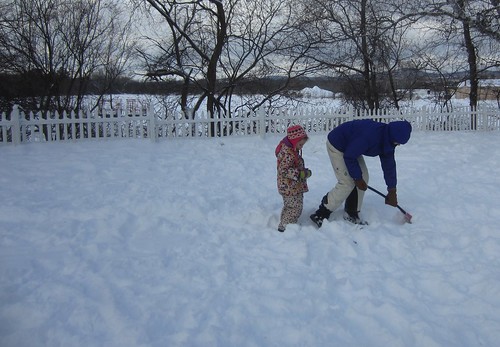





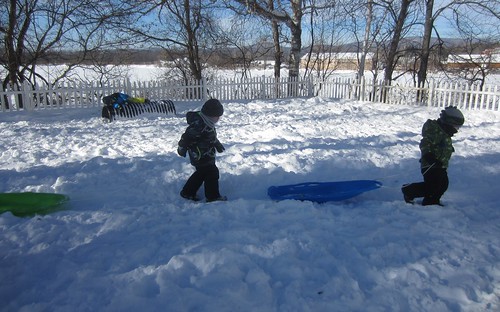





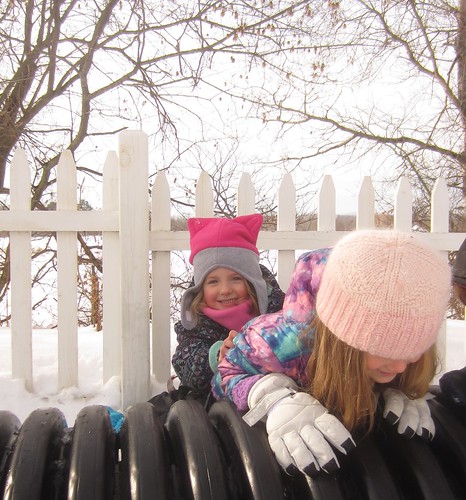 For art on Monday we spooned marbles out of jars of paint, dropped them on paper in a box, then shook the box to make the marbles roll the paint around, creating colorful lines back and forth across the paper. This activity continued throughout the week with varied shades of green paint and green paper to make needle covered branches for the evergreen trees in our classroom forest.
For art on Monday we spooned marbles out of jars of paint, dropped them on paper in a box, then shook the box to make the marbles roll the paint around, creating colorful lines back and forth across the paper. This activity continued throughout the week with varied shades of green paint and green paper to make needle covered branches for the evergreen trees in our classroom forest.
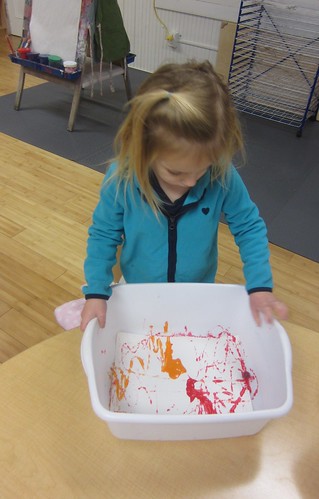

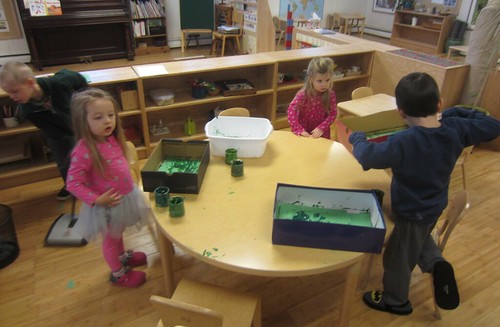 In the sensory table the children grated up bars of soap and unwound rolls of toilet paper, then mixed them all together with water to make “clean” snow. They loved the feel, and had so much fun smooshing and molding it.
In the sensory table the children grated up bars of soap and unwound rolls of toilet paper, then mixed them all together with water to make “clean” snow. They loved the feel, and had so much fun smooshing and molding it.



 The students were very busy painting evergreen and birch tree trunks and branches, then assembling them in dramatic play. They colored and cut out flowers and mushrooms to adorn the forest floor, and painted the base of the fairy mushroom house that will be set up next week. The children are very excited about these projects and this dramatic play theme. The bears, bunnies, and foxes have been very busy in our forest already, and the fairies are anxious to move in soon.
The students were very busy painting evergreen and birch tree trunks and branches, then assembling them in dramatic play. They colored and cut out flowers and mushrooms to adorn the forest floor, and painted the base of the fairy mushroom house that will be set up next week. The children are very excited about these projects and this dramatic play theme. The bears, bunnies, and foxes have been very busy in our forest already, and the fairies are anxious to move in soon.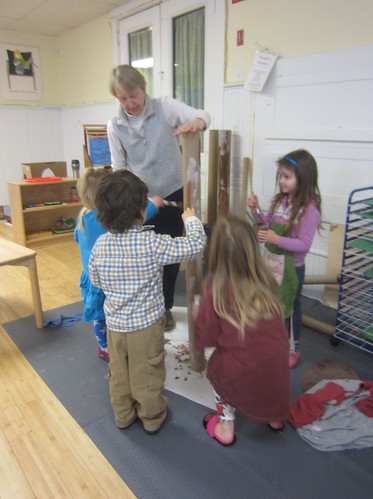


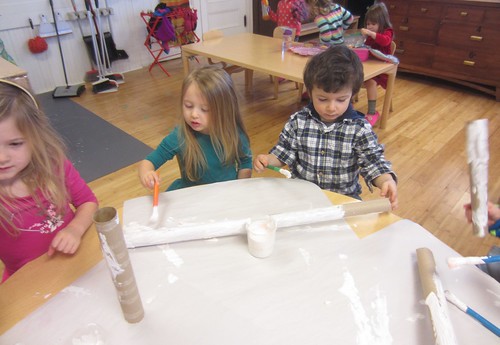

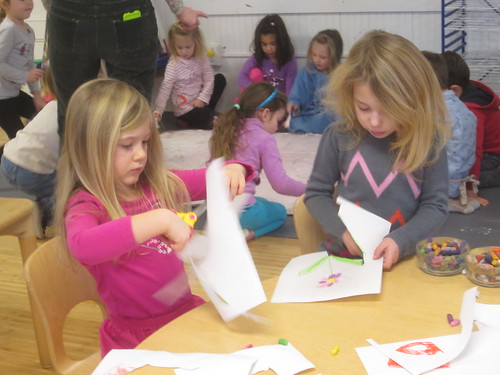
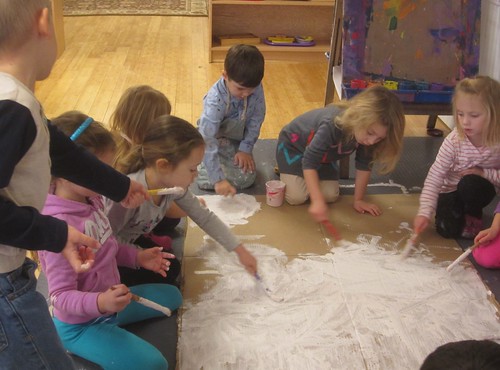
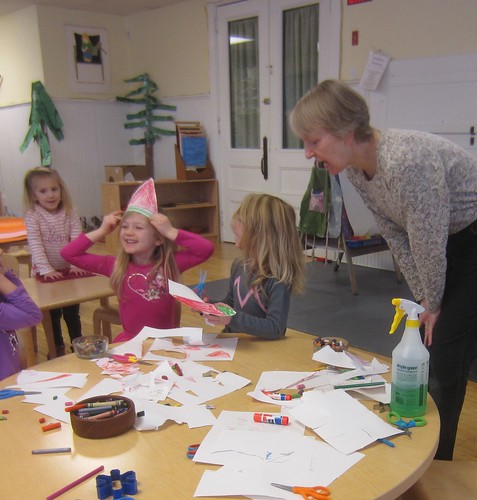 We celebrated a new year’s birthday with our newest five-year-old. It is hard to believe that she is 5! She happily orbited the globe around the sun while we listed the seasons and counted up the five years since her birth. After singing Happy Birthday everyone enjoyed the delicious fruit salad she brought to share with some strawberry cream cheese dip. It disappeared very quickly!
We celebrated a new year’s birthday with our newest five-year-old. It is hard to believe that she is 5! She happily orbited the globe around the sun while we listed the seasons and counted up the five years since her birth. After singing Happy Birthday everyone enjoyed the delicious fruit salad she brought to share with some strawberry cream cheese dip. It disappeared very quickly!
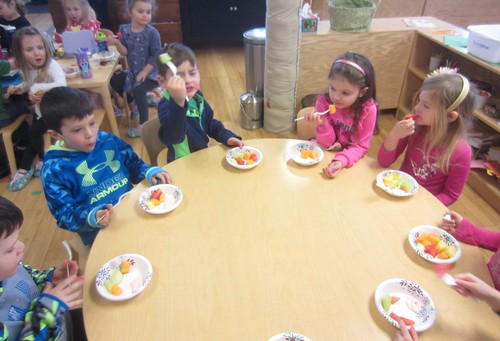 We played some fun games to reinforce the concept of personal space through the introduction of “own” and “common” space. On Tuesday we played NEAR and FAR, where we got as near to something (the wall, a shelf, etc.) then as far from it as possible. We ended by being as FAR from everyone else as possible and as NEAR to ourselves. On Wednesday we continued by building bubbles around ourselves and being careful to keep them intact by staying just far enough away from others to prevent them from popping. On Thursday we practiced moving in different ways within our “own” space and the “common” space, while keeping our bubbles intact.
We played some fun games to reinforce the concept of personal space through the introduction of “own” and “common” space. On Tuesday we played NEAR and FAR, where we got as near to something (the wall, a shelf, etc.) then as far from it as possible. We ended by being as FAR from everyone else as possible and as NEAR to ourselves. On Wednesday we continued by building bubbles around ourselves and being careful to keep them intact by staying just far enough away from others to prevent them from popping. On Thursday we practiced moving in different ways within our “own” space and the “common” space, while keeping our bubbles intact.
We continued our introduction to Mammals with a sorting activity. Each child got an animal, which they examined then placed on a tray of either insects, arachnids, birds, or mammals according to how many legs it had and what type of covering (feathers, hair/fur, or an exoskeleton).









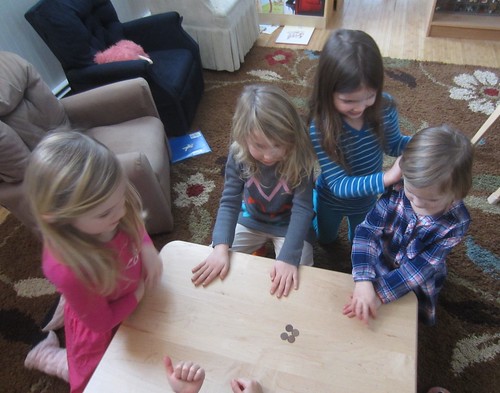
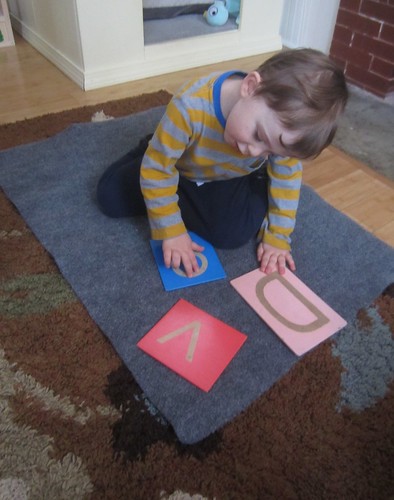 The civil rights movement was introduced through several books about skin color, which lead to discussions about getting to know people by talking with them and spending time together, rather than determining who they are based on appearance. We looked at a map of the earth showing skin tone, and saw that the closer people live to the equator, the darker their skin, though now with ships, cars, and airplanes people of all skin shades live all over the earth. We learned that skin tone is determined by how much melanin is in your skin, and that lighter skin gets darker when exposed to the sun for longer periods of time. We read some books about Martin Luther King Jr. and Ruby Bridges, and the unfair laws that prevented those with darker skin from sharing water fountains, schools, and restaurants with those with lighter skin, and how people worked together to abolish those laws.
The civil rights movement was introduced through several books about skin color, which lead to discussions about getting to know people by talking with them and spending time together, rather than determining who they are based on appearance. We looked at a map of the earth showing skin tone, and saw that the closer people live to the equator, the darker their skin, though now with ships, cars, and airplanes people of all skin shades live all over the earth. We learned that skin tone is determined by how much melanin is in your skin, and that lighter skin gets darker when exposed to the sun for longer periods of time. We read some books about Martin Luther King Jr. and Ruby Bridges, and the unfair laws that prevented those with darker skin from sharing water fountains, schools, and restaurants with those with lighter skin, and how people worked together to abolish those laws.


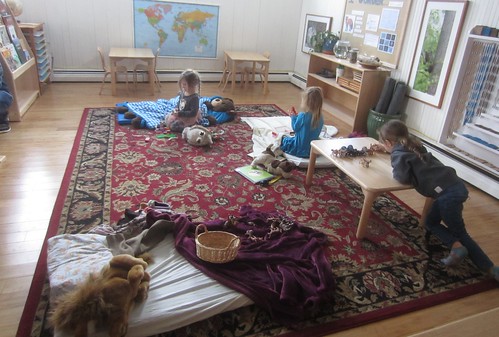







 Susan introduced the story Peter and the Wolf by playing clips of instruments playing Prokofiev’s compositions for each character in the story. We began by listening to the short clips, then moving our bodies to the music. We then gathered back together to listen again and guess which type of animal or person each instrument & music might represent. We matched music to the bird, cat, Peter, duck, grandfather, wolf, and hunters. Next week we will listen to the full story and continue to become familiar with the instruments representing the characters.
Susan introduced the story Peter and the Wolf by playing clips of instruments playing Prokofiev’s compositions for each character in the story. We began by listening to the short clips, then moving our bodies to the music. We then gathered back together to listen again and guess which type of animal or person each instrument & music might represent. We matched music to the bird, cat, Peter, duck, grandfather, wolf, and hunters. Next week we will listen to the full story and continue to become familiar with the instruments representing the characters.




 For science on Friday we continued exploring scales. The children examined a variety of scales used to weigh food, people, and other items. We looked at digital scales and balance scales. Each child took a turn weighing him/herself on a body weight scale, and we recorded each child’s weight. The children then paired up in small groups or worked as individuals and chose a balance scale. They selected an animal or two to weigh. They placed the animal in one tray of the scale, then carefully placed weights in the other tray. With some guidance, they carefully added and removed weights until the scale was balanced, then added up the weight of their animal. At the end of the morning, we examined our lists of weights and ordered them from lightest to heaviest, and created bar graphs showing the weights of the children and the animals we weighed.
For science on Friday we continued exploring scales. The children examined a variety of scales used to weigh food, people, and other items. We looked at digital scales and balance scales. Each child took a turn weighing him/herself on a body weight scale, and we recorded each child’s weight. The children then paired up in small groups or worked as individuals and chose a balance scale. They selected an animal or two to weigh. They placed the animal in one tray of the scale, then carefully placed weights in the other tray. With some guidance, they carefully added and removed weights until the scale was balanced, then added up the weight of their animal. At the end of the morning, we examined our lists of weights and ordered them from lightest to heaviest, and created bar graphs showing the weights of the children and the animals we weighed.

